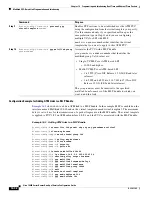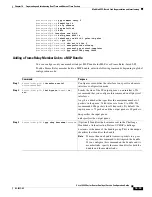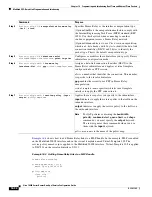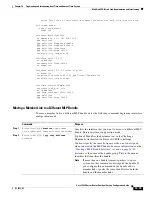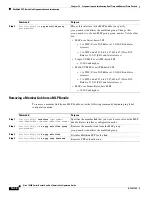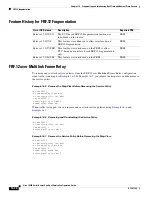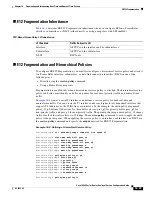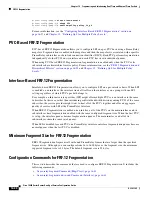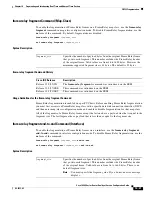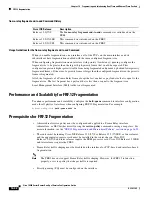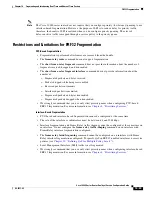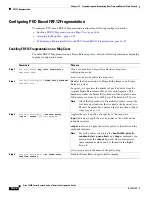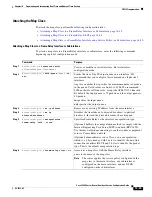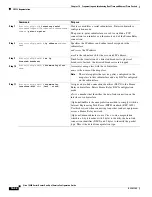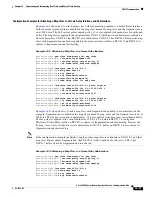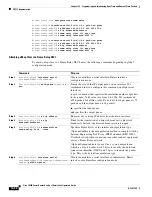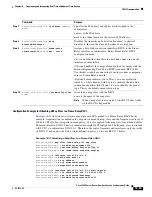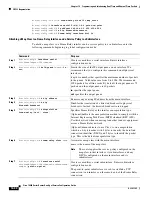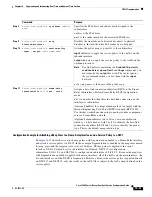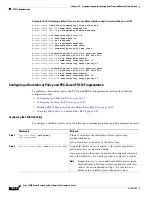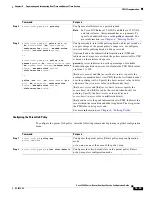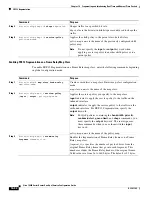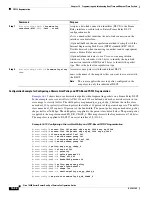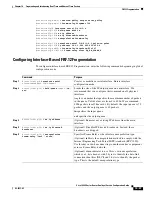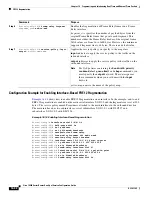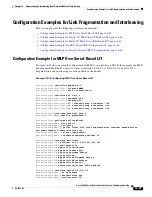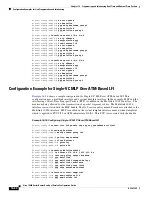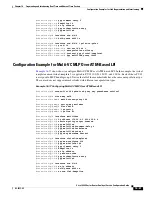
16-46
Cisco 10000 Series Router Quality of Service Configuration Guide
OL-7433-09
Chapter 16 Fragmenting and Interleaving Real-Time and Nonreal-Time Packets
FRF.12 Fragmentation
Step 7
Router(config-if)#
interface serial
slot
/
module
/
port
.
T1#
:
channel
.
subinterface-
number
[
point-to-point
]
Creates or modifies a serial subinterface. Enters subinterface
configuration mode.
The point-to-point subinterface is used to establish a PVC
connection to an interface on the remote end of the Frame Relay
connection.
Step 8
Router(config-subif)#
ip address
address
mask
Specifies the IP address and subnet mask assigned to the
subinterface.
address
is the IP address.
mask
is the subnet mask for the associated IP address.
Step 9
Router(config-subif)#
no ip
directed-broadcast
Disables the translation of a directed broadcast to physical
broadcasts. Instead, the directed broadcasts are dropped.
Step 10
Router(config-subif)#
frame-relay class
name
Associates a map class with the subinterface.
name
is the name of the map class.
Note
The router applies the service policy configured in the
map class to this subinterface and any DLCIs configured
on the subinterface.
Step 11
Router(config-subif)#
frame-relay
interface-dlci
dlci
[
ietf
|
cisco
]
Assigns a data-link connection identifier (DLCI) to the Frame
Relay subinterface. Enters Frame Relay DLCI configuration
mode.
dlci
is a number that identifies the data-link connection on the
interface or subinterface.
(Optional)
ietf
sets the encapsulation method to comply with the
Internet Engineering Task Force (IETF) standard (RFC 1490).
Use this keyword when connecting to another vendor’s equipment
across a Frame Relay network.
(Optional)
cisco
indicates to use Cisco’s own encapsulation,
which is a 4-byte header, with 2 bytes to identify the data-link
connection identifier (DLCI) and 2 bytes to identify the packet
type. This is the default encapsulation type.
Command
Purpose

